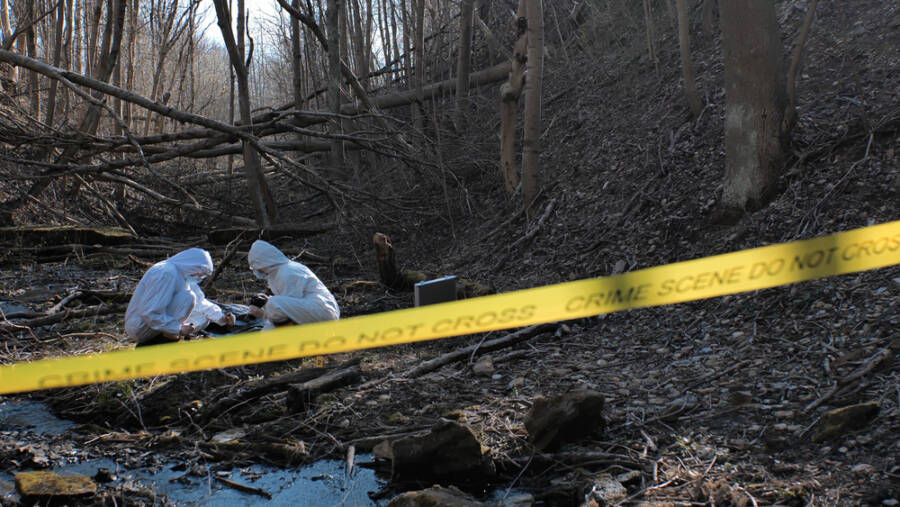Do you know any funeral rituals from the Victorian Era that are still used nowadays?
The Victorian Era was completely insane in many aspects, and funeral rituals are definitely one of them. From taking pictures with the deceased to horses decorated with ostrich feathers, everything is quite a journey to discover.
I am not giving you any spoilers from the first paragraph; I just want to “prepare” you for what comes. While some of these funeral rituals from the Victorian Era will surprise you, you will see some that are kept even in today’s world.
Now, without further ado, let’s start looking at some of the most unusual funeral rituals from the Victorian Era:

The rise of “death photography”
You’re probably familiar with those spooky pictures with deceased people in it. In today’s world, this is something unusual but it was a very common thing during Victorian times. However, let’s see how it all started.
After the daguerreotype was developed in 1839, some people started taking pictures of their families. But for the typical household, the price was too high. Many people limit their photography to significant life events, such as a loved one’s passing. As a result, it became common practice to take a picture of a deceased loved one. The family had a permanent visual memory of their loved one with the snapshot.
This technique, which was popularly known as “death photography,” persisted into the Victorian era. Children were the most often photographed group due to their high death rates.
Even though it’s no longer done, we still take postmortem photos. Currently, pathology and forensics are the most common contexts for it.
The grave had to be fancy and luxurious
This is one of those funeral rituals from the Victorian Era that’s still present in our world, at least in some countries, especially for Catholic ones.
Before the Victorian era, most people had graveyards close to their homes and churches. Since there are now public cemeteries, it has become popular to commemorate and luxuriously mark a funeral.
In contrast to their earlier simplicity, burial markers grew significantly more complex throughout the Victorian era. Some memorials remain basic, while others can be huge, resembling a private mausoleum, with urns, wreaths, columns, or sculpted figures.
I don’t want to sound weird, but everybody needs a fancy home in the afterlife; after all, we all struggled in this life, so we deserve some peace on the other side…
Black-bordered funeral invitations
Written invitations were used to invite people to funerals during the Victorian period. Typically, a private courier would deliver the invitations, which included black borders. For almost a century, black-bordered invitations were a custom prevalent in Victorian cemeteries.
Uninvited attendance at a funeral was deemed inappropriate. Not attending the service would be unacceptable, considering how well the invitations looked. I mean, as good as possible for a… well, you know, a funeral.
Mourning clothes were mandatory
This is one of those funeral rituals from the Victorian Era that is still practiced today by many. People used to believe that a person’s clothing might reveal their innermost emotions. This particular “rule” applied to women mostly, since their clothes during “deep mourning” were often deep black, non-reflective, trimmed in black crepe, and worn with little to no jewelry.
Widows were also required to have on a “widow’s cap” or black silk “weeping veil.” A lady entered “half mourning” after a set amount of time, during which time muted hues like lavender and gray were acceptable.
On the other hand, men were luckier since their only mandatory accessories were black hatbands, cravats, and dark suits with gloves.
There was a mourning period
The third of the funeral rituals from the Victorian Era that’s also present in our century is the mourning period after the death of a loved one. Depending on the kind of loss—spouse, brother, parent, kid, cousin, etc.—the mourning period varied. Widows, for instance, were supposed to dress in mourning for two years: one year in full mourning and one year in half-mourning.
During a period of intense mourning, a widow was not allowed to leave the house outside of church and was required to wear only black clothing.
Men were expected to remarry relatively quickly, which meant that social norms for them were less strict when it came to widow loss. A year was designated for the grieving process for children who were losing parents, or vice versa.
But regardless of what society says, people need to take the time they need, and others around them understand that grieving is a necessary part of life.
…psst! Are you curious for more insight into the mourning of loved ones from the Victorian Era? I have the perfect book suggestion for you. The Art of Grieving: The Beauty Behind Victorian Mourning Customs is available on Amazon for just $20 in paperback format.
This book was a great source of inspiration for my article so you better check it out because I only stated a couple of things here and there is always more to explore.
Horses worn drapes
Blankets knitted by hand were slung over draft horses. The blankets had two functions. The flies were first kept off the horse. Secondly, they conveyed the identity of the deceased.
The elderly who had passed away were buried with black horses covered in black blankets. Children rode on white ponies covered in white blankets.
Similarly, a white hearse was meant for little children and a black hearse for adults. The dead were young people in their teens or early twenties who were single if the hearse was black and the horses were white.
Among all the funeral rituals from the Victorian Era, this was probably one of the most beautiful ones, and it’s a pity it isn’t used nowadays either.
Ostrich feathers were a thing
This started in 1852, when twelve black horses, each adorned with a striking plume of black ostrich feathers, drew the hearse belonging to the Duke of Wellington.
From then on, all the most elegant funerals had hats, hearses, and horses decked out with ostrich feathers. The common belief was that a person was better the more feathers he had.
Ostrich feathers decorated each corner, horse, and attendant at some lavish funerals. Even the wealthy visitors wore them. During the viewing, there were even canopies entirely covered with ostrich feathers placed over the casket.
Victorians were very superstitious
The Victorians believed in the paranormal and were deeply spiritual people. This point of view led to the development of some beliefs about death. For example, one of the first superstitions that are still present in some parts of the world is that all the mirrors and curtains must be covered until after the burial to prevent the image of the departed from becoming stuck in a looking glass.
At the time of death, all clocks were stopped to ward off evil luck. Furthermore, they also turned family photographs face-down to protect the living from being possessed by the recently deceased. Creepy!

It was a must to wear a black ribbon to prevent death from spreading
Does this sound familiar to you? Wearing a black ribbon is one of the funeral rituals from the Victorian Era that’s still going on in this century too.
Everyone who entered the house was supposed to wear a black ribbon if many members of the same family passed away to stop the deaths from spreading. Close family members should dress entirely in black. All visitors needed to do was wrap an arm with a black ribbon.
The delicate silk crepe, which had been stripped of its shine, was wrapped around the bedroom doorknob of the deceased person’s chamber. During the mourning time, it was used to hang portraits and mirrors and trim clothes, cloaks, and bonnets.
Final thoughts:
These days, death is a taboo subject that we usually avoid discussing or even thinking about. It’s sad to just think that one of your closest family members will die one day, but there’s a lesson to be learned from the Victorians: discussing and making plans for dying is acceptable.
The Victorians acknowledged death as a fact of life and made plans for it, but they did not dwell on it. While they were seen as weird because of all their customs, they understood the importance of honoring the memory and celebrating the life of a loved one.
If you’re keen on finding more facts from the past you are in the right place. Because I love making my readers happy, I try to come up with various topics along the way. That’s why I have a nice reading suggestion for you: 12 Bizarre and Repulsive Practices from the Past.





